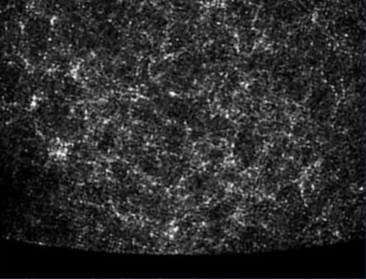The Shifting Stars
All stars are in motion, but their great distances from earth make their movements across the sky—called proper motions—very difficult to measure. The 20-inch Carnegie Astrograph was built for just such measurements. Between 1947 and 1988, its primary occupation was to photograph the entire sky visible from Mount Hamilton — not once, but twice!
The two sets of photographs total 2,492 very large glass-plate negatives making up two complete mosaics of the sky, taken about 27 years apart. Comparing star positions on matching pairs of plates has yielded the proper motions of some 380,000 stars.

Galaxies Strung on Threads
Far beyond the stars, in the deep backgrounds of the photographic plates, a vast number of galaxies appear. They served as fixed reference points against which stars’ motions could be measured. (Galaxies, too, are in motion, but are so distant as to appear stationary.) The galaxy data, known as the Shane-Wirtanen counts, revealed a startling and important discovering: galaxies are not evenly distributed in space but are clustered along thread-like filaments
“The Shane-Wirtanen catalogue contains about a million galaxies…its creation was a heroic display of dedication and patience.”
-J.D. Barrow
Looking for Signs of Alien Life
Beginning in 2019, the Carnegie Astrograph will be repurposed as a test bed for an innovative prototype telescope designed to monitor large numbers of stars for signals from extraterrestrial civilizations. The telescope—part of a projected worldwide network for the UC San Diego-based NIROSETI program (Near-Infra-Red/Optical Search for Extraterrestrial Intelligence)—looks for brief but powerful signals on the supposition that they may be sent using powerful lasers.
“Measurements of large scale structure [of the universe] took a major leap forward with the Lick galaxy catalog produced by Shane and Wirtanen.”
–Alison Coil

